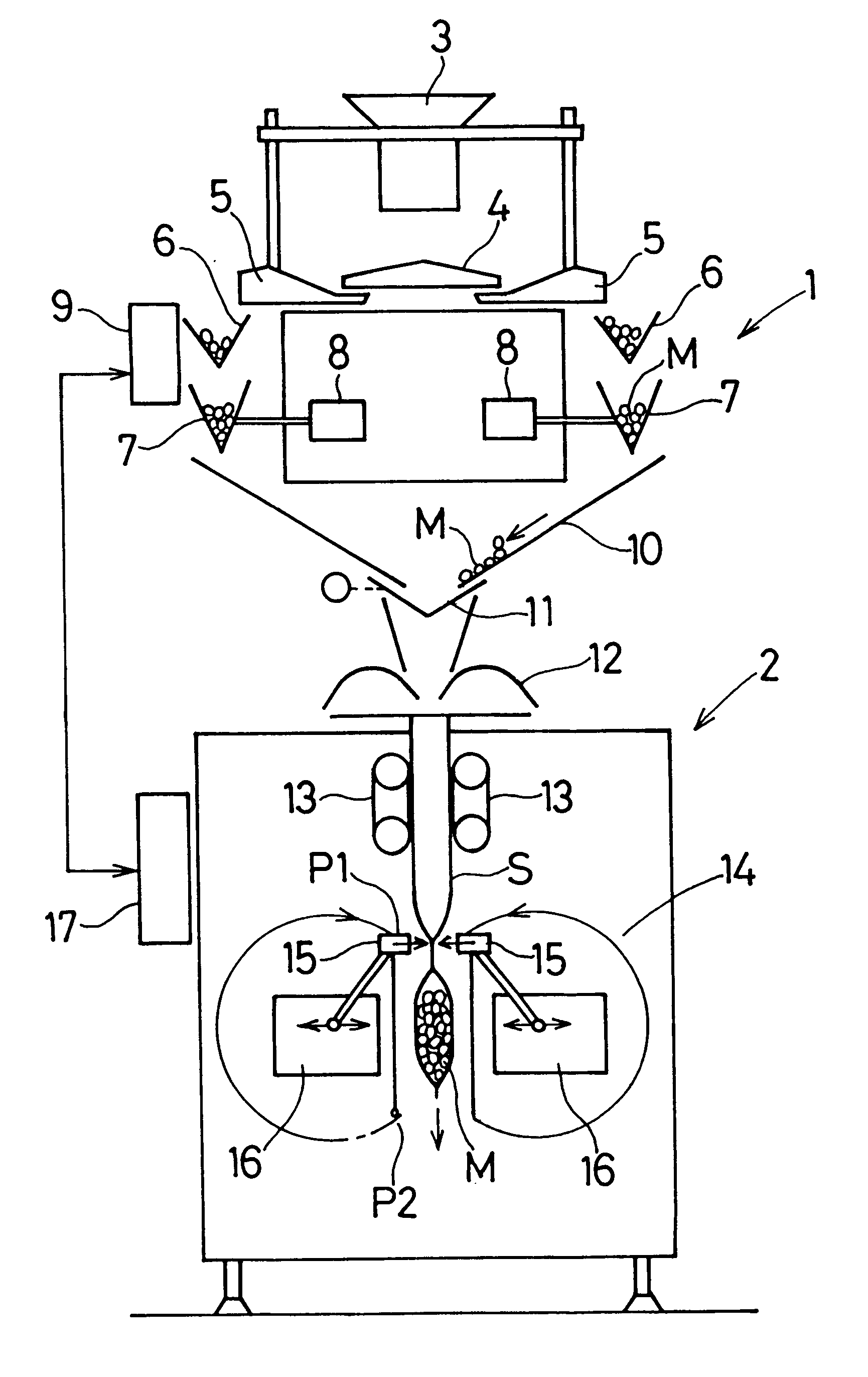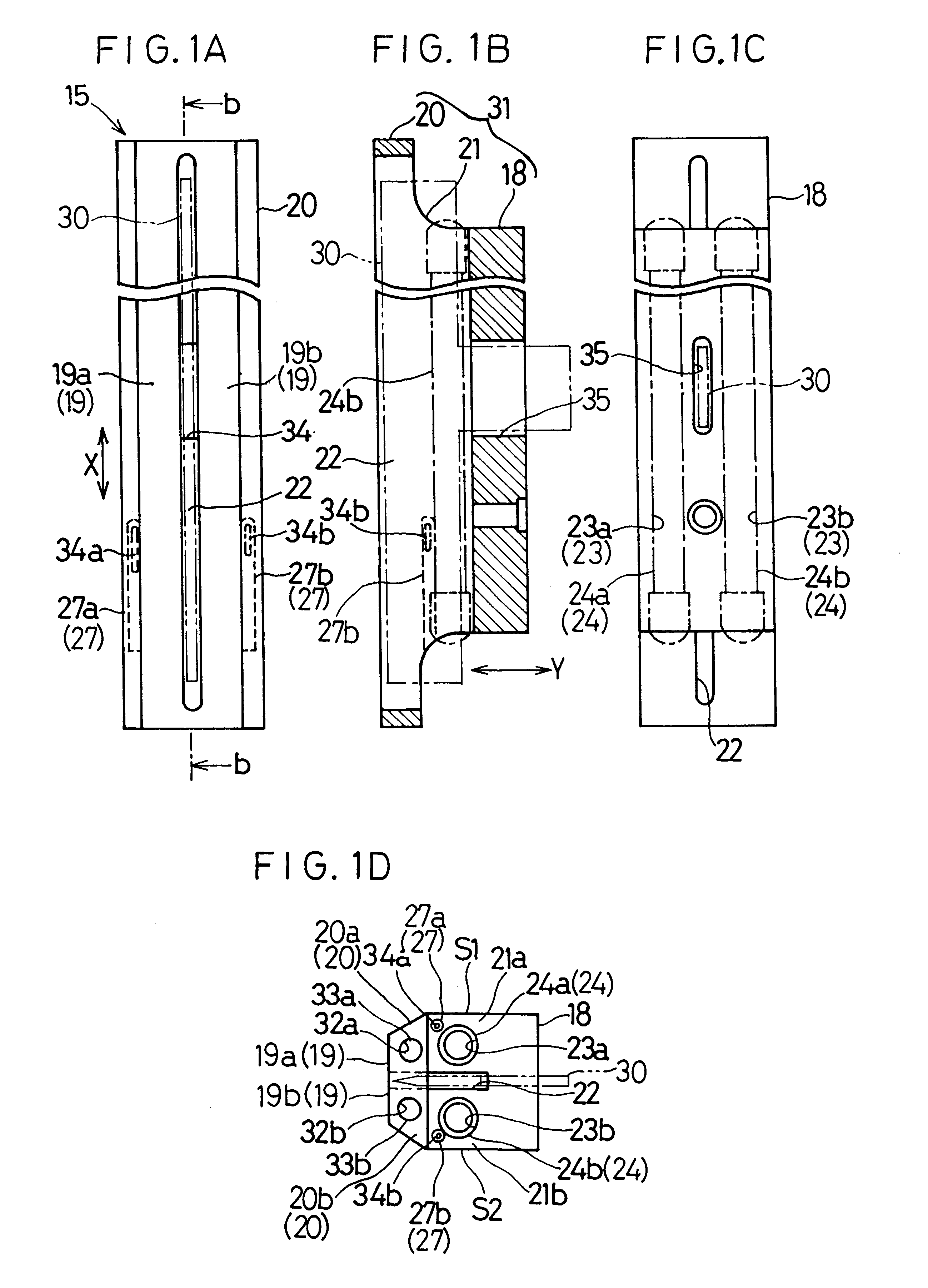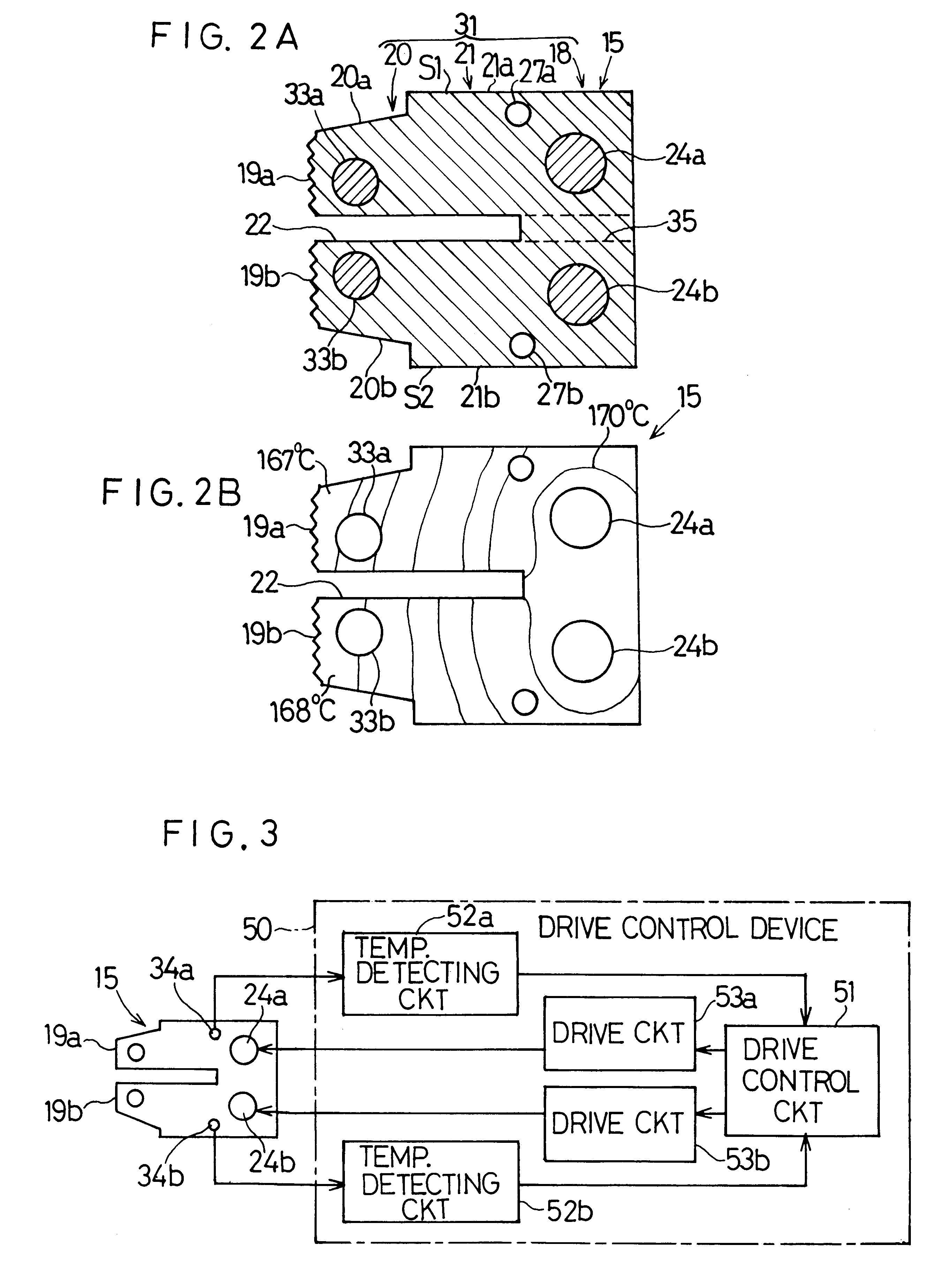Heat sealer for synthetic resin bag
- Summary
- Abstract
- Description
- Claims
- Application Information
AI Technical Summary
Problems solved by technology
Method used
Image
Examples
first preferred embodiment-- figs
First Preferred Embodiment--FIGS. 1A to 5
Referring first to FIGS. 1A to 1D, the transverse heat-sealing jaw 15 shown therein comprises a one-piece block 31 made of a metallic material having a high rigidity such as a ferrous material, for example, stainless steel and including a support section 18 adapted to be supported by the drive means 16 (FIG. 10) which forms a part of the pressing mechanism, a press section 20 having upper and lower sheet contact faces 19a and 19b defined therein, and a connecting section 21 connecting the press section 20 to the support section 18 with the upper and lower sheet contact faces 19a and 19b oriented in a direction away from the support section 18.
In this one-piece block 31, the press section 20 is formed with a cutter groove 22 traversing a fill width of the one-piece block 31 in a direction shown by the arrow while extending inwardly of the one-piece block 31 from a point substantially intermediate between the upper and lower sheet contact faces...
second preferred embodiment-- figs.6a and 6b
Second Preferred Embodiment--FIGS. 6A and 6B
The transverse heat-sealing jaw 15 according to the second preferred embodiment of the present invention differs from that according to the first preferred embodiment in that each of the upper and lower heat conducting members 33a and 33b is employed in the form of a metallic pipe of a high heat conducting property made of, for example, copper and having a relatively large wall thickness and that the corresponding temperature sensors 34a and 34b are inserted into the heat conducting members 33a and 33b to occupy a position aligned with the intermediate portion of the associated sheet contact faces 19a and 10b.
According to the second preferred embodiment, since the temperature sensors 34a and 34b can directly measure the respective temperatures at the intermediate portions of the upper and lower sheet contact faces 19a and 19b, the accuracy of measurements at the intermediate portions can be increased considerably and, therefore, the contro...
third preferred embodiment-- figs.7a and 7b
Third Preferred Embodiment--FIGS. 7A and 7B
In this third preferred embodiment shown specifically in FIG. 7A, the upper and lower rod heaters 24a and 24b are arranged in the upper and lower connecting arms 21a and 21b, respectively, and, at the same time, the upper and lower sensor holes 27a and 27b are defined in the upper and lower connecting arms 21a and 21b at respective locations between the upper and lower rod heaters 24a and 24b and the upper and lower sheet contact faces 19a and 19b with most of each of the upper and lower sensor holes 27a and 27b positioned outside a generally triangular heat conductive region A1 and A2. The triangular heat conductive region A1 in the upper connecting arm 21a is defined as bound between two imaginary lines passing in touch with upper and lower edges 41 and 42 (extending in the direction X) of the upper contact face 19a, respectively, and converging at an angle .theta.a at the longitudinal center Oa of the upper rod heater 24a, whereas the tr...
PUM
| Property | Measurement | Unit |
|---|---|---|
| Power | aaaaa | aaaaa |
| Temperature | aaaaa | aaaaa |
| Length | aaaaa | aaaaa |
Abstract
Description
Claims
Application Information
 Login to View More
Login to View More - R&D
- Intellectual Property
- Life Sciences
- Materials
- Tech Scout
- Unparalleled Data Quality
- Higher Quality Content
- 60% Fewer Hallucinations
Browse by: Latest US Patents, China's latest patents, Technical Efficacy Thesaurus, Application Domain, Technology Topic, Popular Technical Reports.
© 2025 PatSnap. All rights reserved.Legal|Privacy policy|Modern Slavery Act Transparency Statement|Sitemap|About US| Contact US: help@patsnap.com



